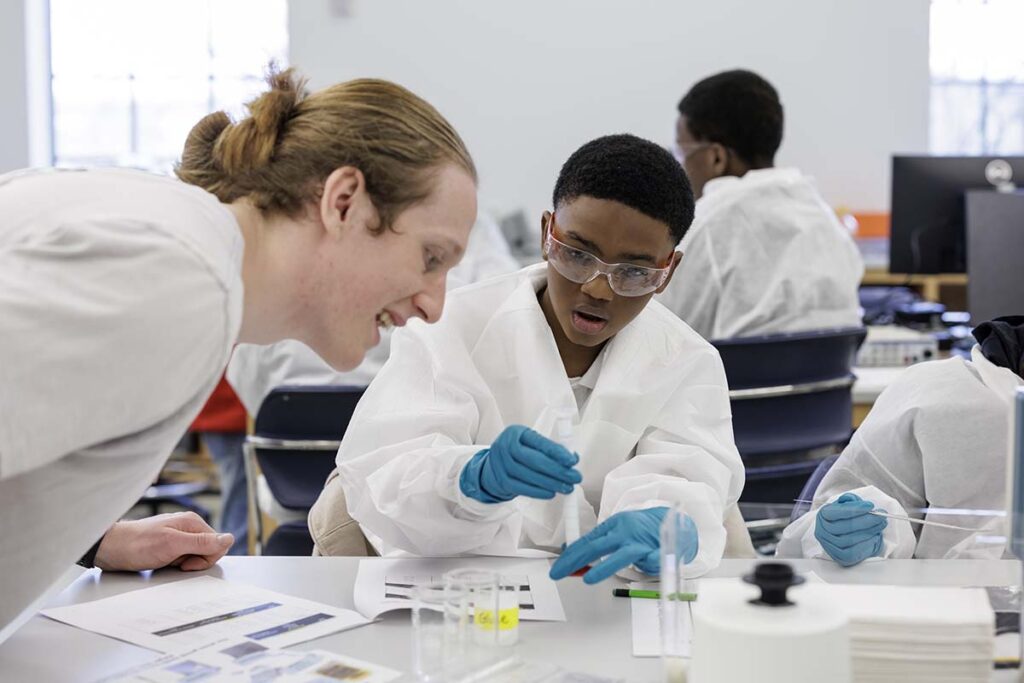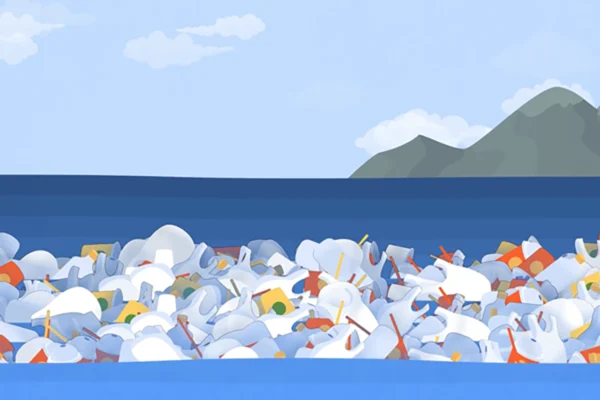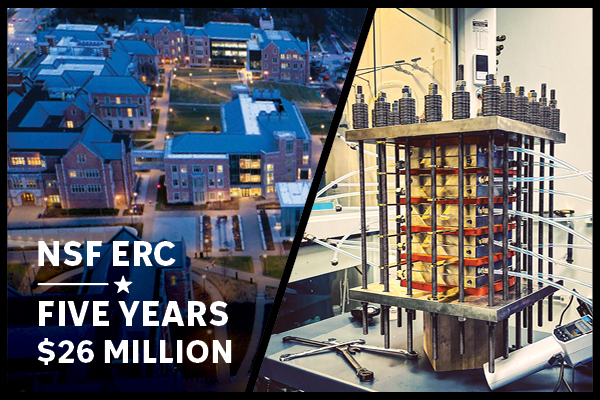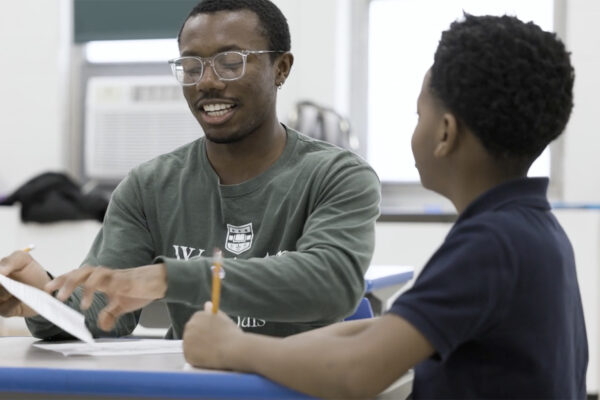Can we produce alternatives to plastic from renewable sources?
WashU engineer Marcus Foston has devoted his life to that question. And today, 25 middle school students from Central Middle School in the Riverview Gardens School District have joined him on that quest. They are part of Washington University in St. Louis’ “Researcher for a Day” program, an immersive experience where young students spend a full day on campus, conducting experiments in WashU labs, exploring related science careers and meeting WashU students and faculty.
“There’s a lot of information that shows that science identity is formed as young as middle school, and so my goal today is to engage these students in real science that they can see this is something that they can do if they want,” said Foston, an associate professor of energy, environmental and chemical engineering at the McKelvey School of Engineering.
The students divide into teams, pull on white lab coats and get to work making bouncy balls, typically made of petroleum-derived plastic, with varying combinations of glue and natural additives such as potato starch, cornstarch and borax. The students drop their balls from a set height, record how high each one bounces and compare their results.
“OK, now it’s your turn to come up with your own recipe. Can you make a bouncy ball that will bounce higher?” challenges Alex Forgerson, an instructional specialist with WashU’s Institute for School Partnership, which hosts the “Researcher for a Day” program and works with schools across the region to improve science, technology, engineering and math (STEM) education.

McKelvey Engineering student Hayden Carlson asks his team of middle schoolers for ideas. One student wants to add more cornstarch, but his classmate has another idea.
“When I was analyzing the data, I saw that the balls that had more potato starch bounced higher, so let’s add more of that,” the student suggests.
Good call. The team’s new ball bounces 27 centimeters, higher than the rest. Central Middle School math teacher Stacey Miller likes what she sees.
“In class, we tell our students that they are capable, that sometimes it won’t work out on the first try, but you have to keep trying, because that’s how you learn,” Miller said. “To hear that lesson from a real scientist, one who looks like them, is important.”
Up next, lunch and a campus tour. But before they go, Foston tells the students that one day, they may solve the next big challenge.
“Hopefully, you were able to see how we were able to use some of the things in our science and math classes to do this simple experiment,” Foston said. “Now think about developing the next technology that’s better than a cellphone or an AI program that’s better than ChatGPT. It’s going to take skills. Every year, you are building toward that.”


